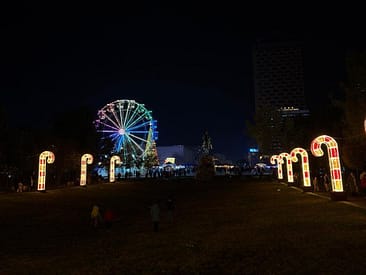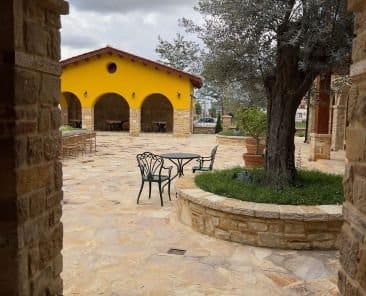MagicTowns provides you with detailed, accurate information to help you make the most of this beautiful country. In line with that goal, we present to you the top 9 coastal villages to visit in Albania. Whether you’re an expat, retiree, or long-term traveller looking to experience the unique charm of Albania’s coastline, our feature will serve as your essential guide. For more comprehensive insights, be sure to explore MagicTowns to its fullest.
Dhermi, Vlore
Traveling down from Llogara Pass towards the Riviera, you first pass through an area where old and new buildings hide among the trees beside the road. It’s not until you round a tight corner and a gorge opens up that you see Dhërmi, a classic village perched on the hillside.
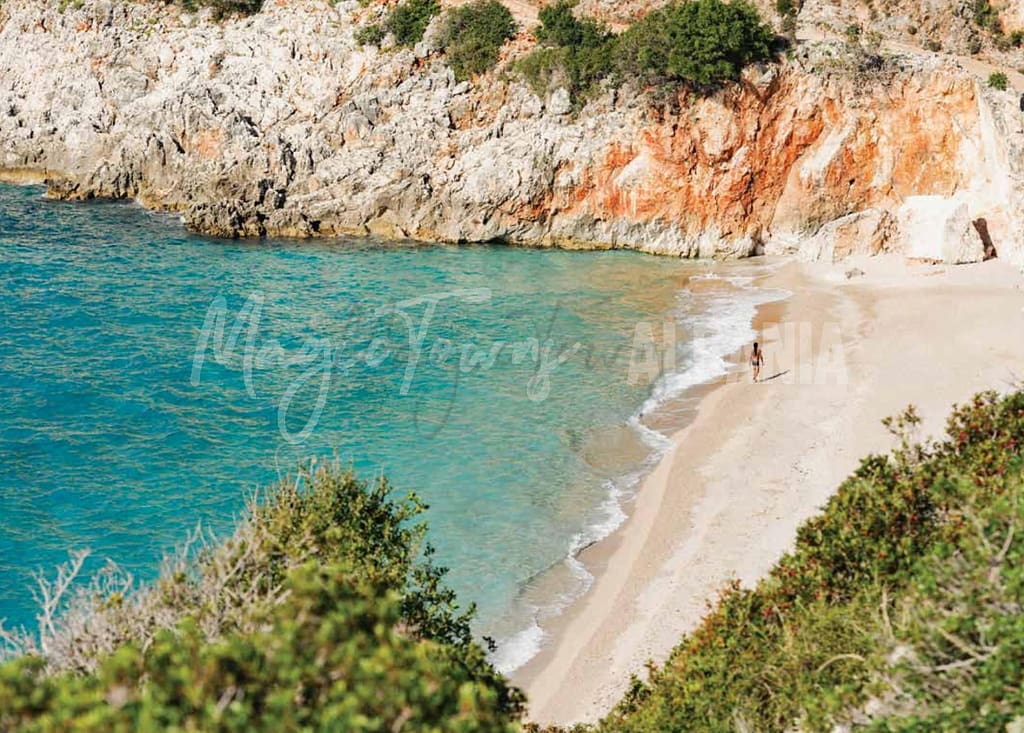
Dhërmi stands out as a special place in the south of Albania. It’s full of history and has grown a bit bigger than other villages because it’s been a stable place for a long time.
Must Visits in Dhermi
At the very top of the village, standing proudly on a high rock, is the Pangji Monastery (Manastiri i Pangjisë). This place has been around since the 1300s or 1400s. There are three other important monasteries nearby, with St. Theodore’s Monastery being the most well-known, along with monasteries dedicated to St. Mary and Stavridh.
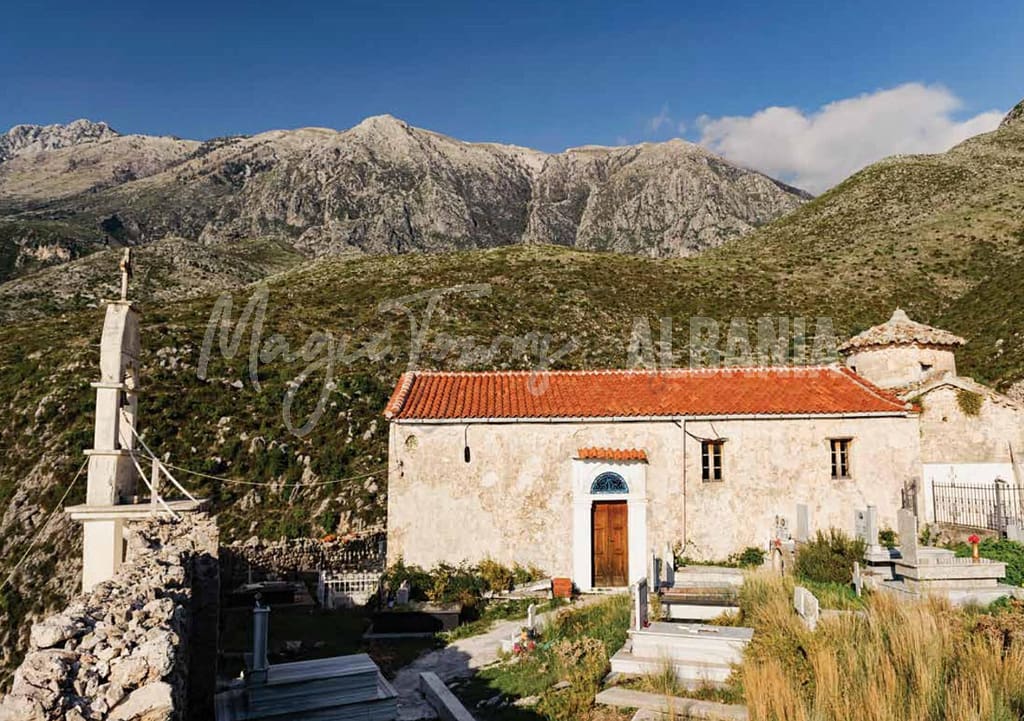
The village also has two big churches, one named after Saint Harallamb and the other after Saint Spiridon. There are lots of smaller churches too, many built with money sent back by people from the village who moved away. Some of the most interesting churches, because of their design and wall paintings, are the Church of St. Stephen and the Church of St. Demetrius. The Church of St. Demetrius has the oldest wall paintings in Albania, which were made back in the 1100s.
Documents from the 1500s and 1600s tell us that the Catholic Church tried to get people in Himarë and especially Dhërmi to change their religion. They did this through a group called the Basilians and they even set up a school for priests that taught in Albanian.
One of the biggest events in the village is the celebration of St. Mary’s Day. It’s a time when lots of people come together to have fun and celebrate.
Qeparo
Qeparo is a lovely old village in Albania that has stayed the same despite many years of changes in the country. It has a calm and wise feel, like it’s not easily bothered by anything. Walking around Qeparo is like stepping back a hundred years. You can see the old houses, big gardens, and imagine what life was like back when things were a lot less certain. On a quiet day in May, you might not see many other people and might not find a place to grab a coffee.
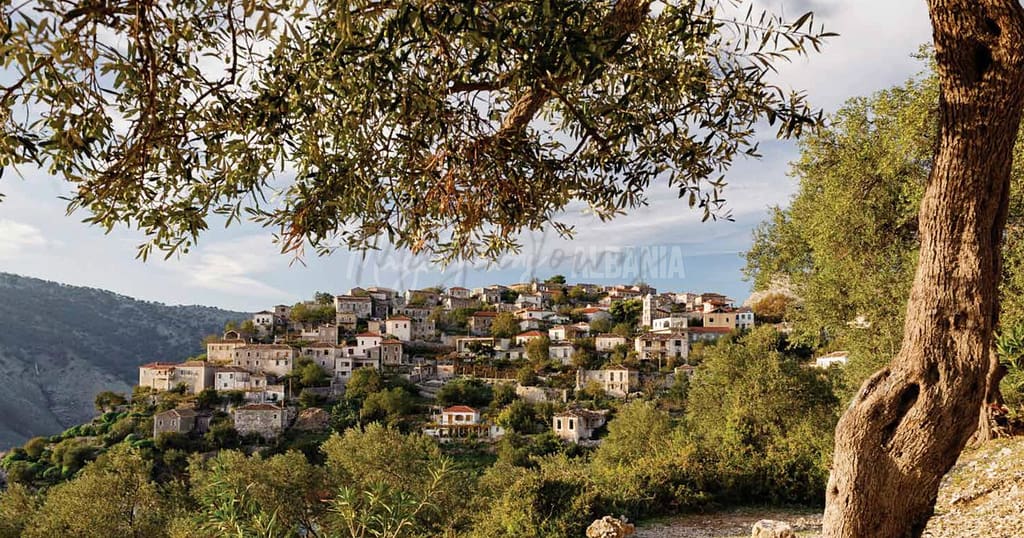
Qeparo is reached by a narrow, curvy road that quickly climbs a hill covered in olive trees. The very old part of Qeparo sits on the edge of a cliff on the north side.
Must Visits in Qeparo
Karos Castle: The Karos Castle is an old, prehistoric site in Qeparo, up on a high rocky hill called Gradishta. It’s really high up, about 450 meters! The castle has three layers of walls, and the longest wall is 340 meters and bends with the shape of the land, right on the edge of a steep drop.
St. Demetrius Church: St. Demetrius Church is part of a little area with a school and housing for church staff. The church is shaped like a cross with a dome, and it’s quite small inside.
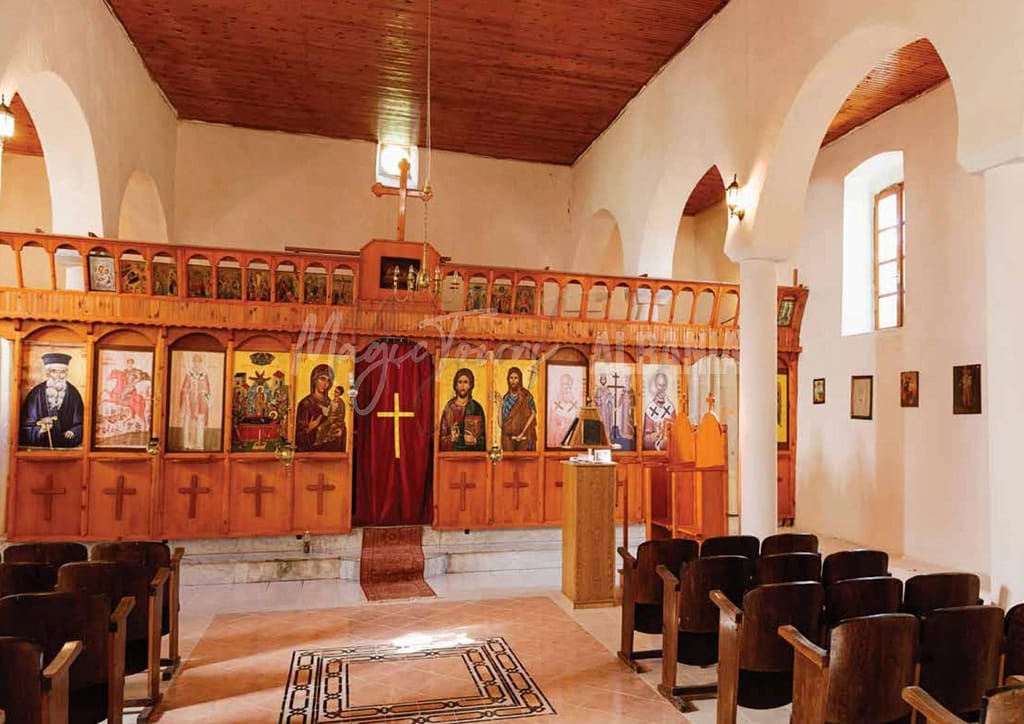
Ali Pasha’s Tower: Ali Pasha’s Tower, also known as the Tower of Vlashaj, is a big, old building with three floors. It’s just a short walk from Qeparo village.
Borsh
Borsh is like a big group of old and new homes spread out where a river from the mountains meets the sea. The high mountains were a good place to build a safe castle. The flat land with good dirt was perfect for growing olive trees.
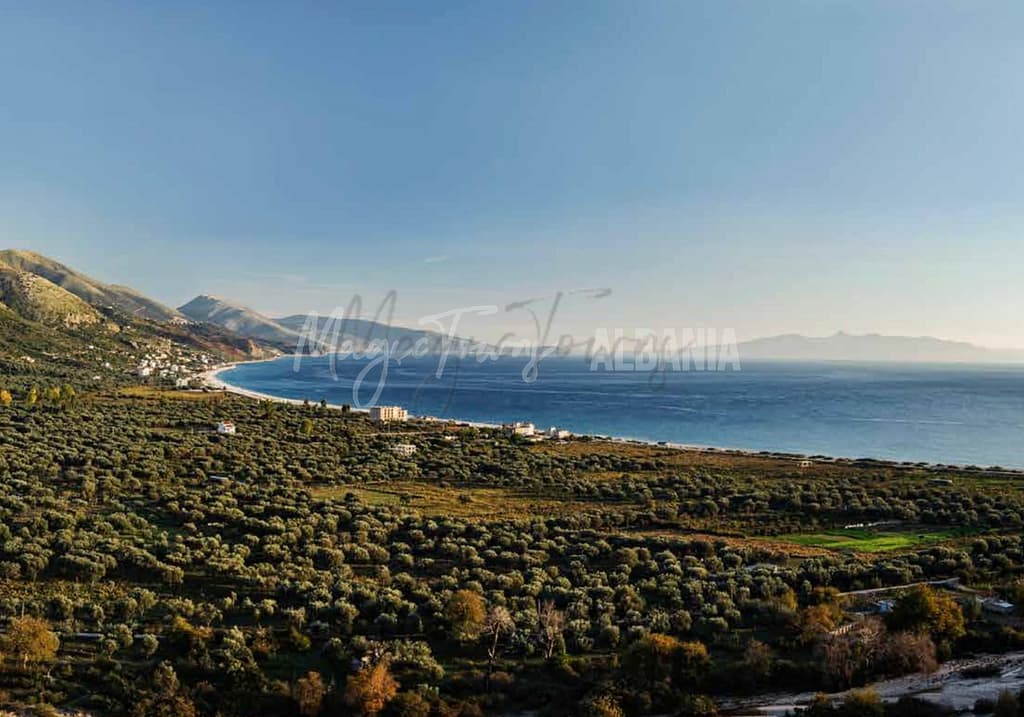
Now, Borsh is famous for making olive oil. Farmers bring their olives here to make oil, which is then put in bottles and sold in Albania or sent to countries like Italy and Greece. You can find Borsh olive oil in big supermarkets in Tirana. People like it because it tastes light and sweet.
Must Visits in Borsh
Sopot Castle: Sopot Castle has been built and rebuilt for a really long time, starting before history was even written down. The oldest parts are from the late Bronze Age.
Ancient Fortified Villas: There are some really interesting ruins of big houses that rich people used to own in Borsh. The Muzge Villa is on a slope and is shaped like a trapezoid with strong walls. It was built in the third century BC and was used for a long time.
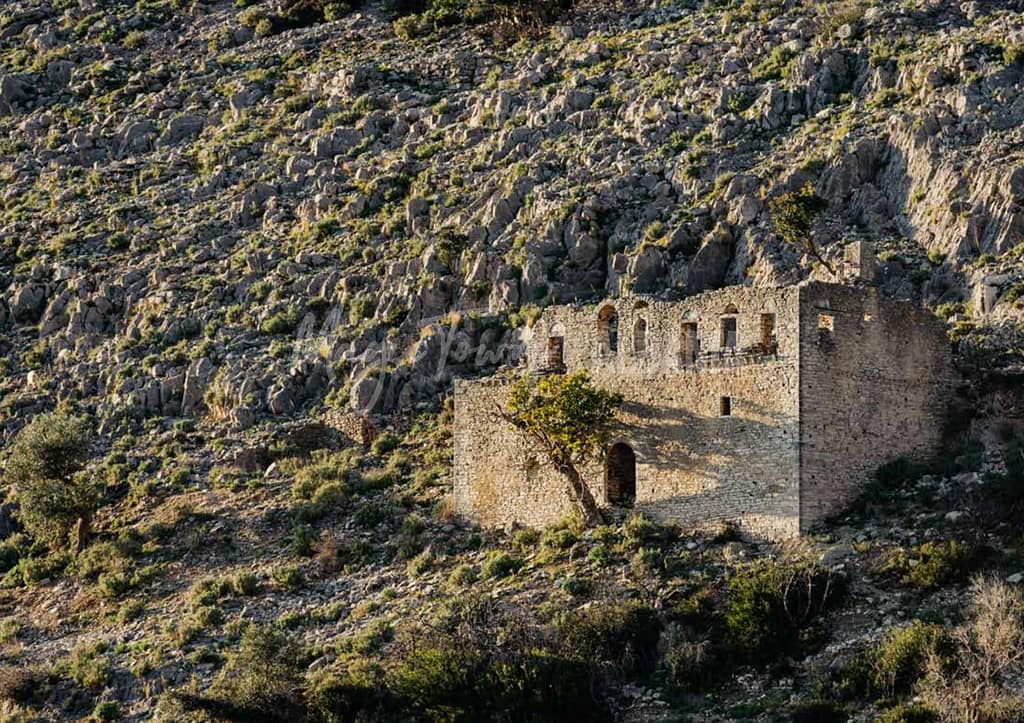
Ancient City Tombs: Near the castle, there’s an old graveyard with one big special tomb and three simpler ones made of big stone slabs. The big tomb, found in 1974, has a secret front room to trick thieves and a main room where the person was buried with important and valuable things like weapons and a crown.
Medieval Castle & Badhra Castle: Later, they built a medieval castle right on top of the old fort. It has a funny shape because of the land and was split into two parts. It has three guard towers and two doors. Badhra Castle is even older, from the late Bronze Age. It’s up on a hill and has a long wall with just one door.
Borsh Olive Grove: Borsh is famous for making lots of olives and turning them into olive oil. Under communism, they made the land really good for growing olives. Many farms still grow olives there, and the olives are taken to Borsh to be squashed into oil and put in bottles to sell in Albania or other countries.
Himara

Himara is the biggest old town in the area when it comes to size. Since Himara is built on a hillside, it’s easy to know where you are as you walk through the narrow old streets. You can explore freely and find all sorts of interesting things. The best part of the walk is when you reach the top of the hill where old castle ruins are. There’s still a church there that people use, and you can see amazing views of the sea and the mountains.
Must Visits in Himara
St. Sergius and St. Bacchu Church: This church is at the top of the village, near the castle’s walls. It has a main room and a special area called an altar. The church has been fixed many times, and an old record from 1577 says it was once burned and rebuilt.
The Cave of Spile: This cave is in the newer part of Himarë, by the sea. It was first dug up by Italian researchers in the 1920s and 1930s, revealing that people lived there a long time ago, like in the Neolithic period (3000-2100 BC). It’s also famous because of a story from Homer’s “Odyssey,” where the hero Odysseus stopped at this cave and had an adventure with a giant called Cyclops.
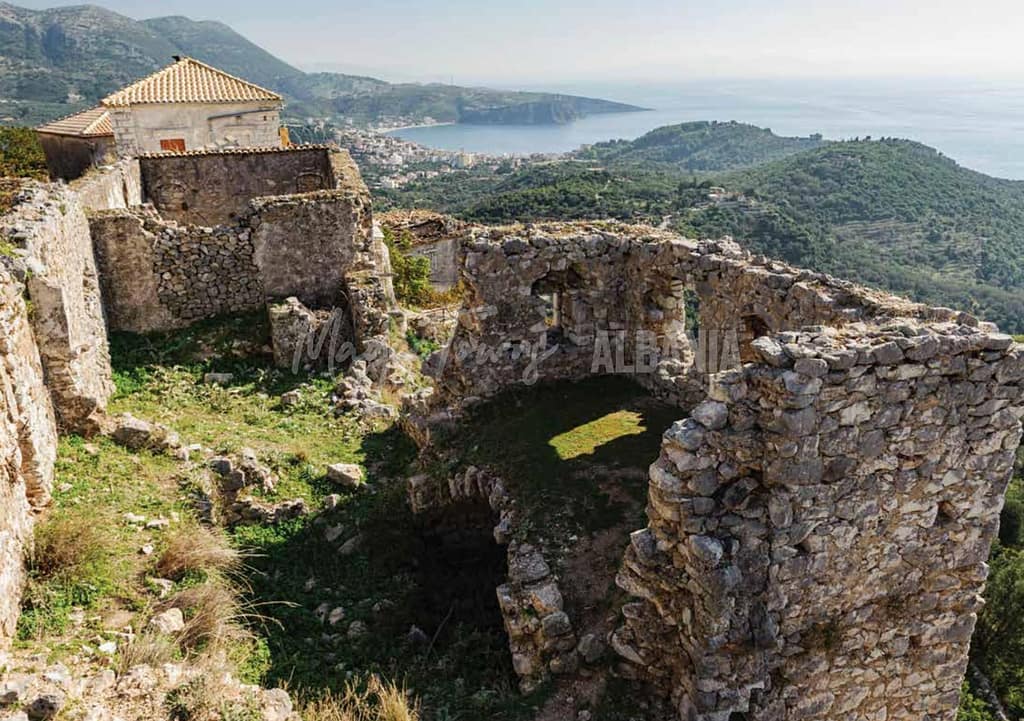
St. Mary of Athal Church: This church is on a hill, a couple of hours from Himarë, built in 1795.
All Saints Church: This church is on the east side of Himarë’s castle. It’s a big church with three sections, divided by a wooden wall with special designs. It has two doors and wooden supports and columns with carvings.
Porto Palermo
Just past the Qeparo beaches, there’s a small, quiet bay about 2.5 kilometers up north. This bay is tucked away from the winds and is called Porto Palermo. This place has a long history and was known way back in old times as a special harbor. The local Kaon tribe used to call it “Panormou,” and it’s been talked about by famous writers from Greece and Rome since before the year 500 BC.
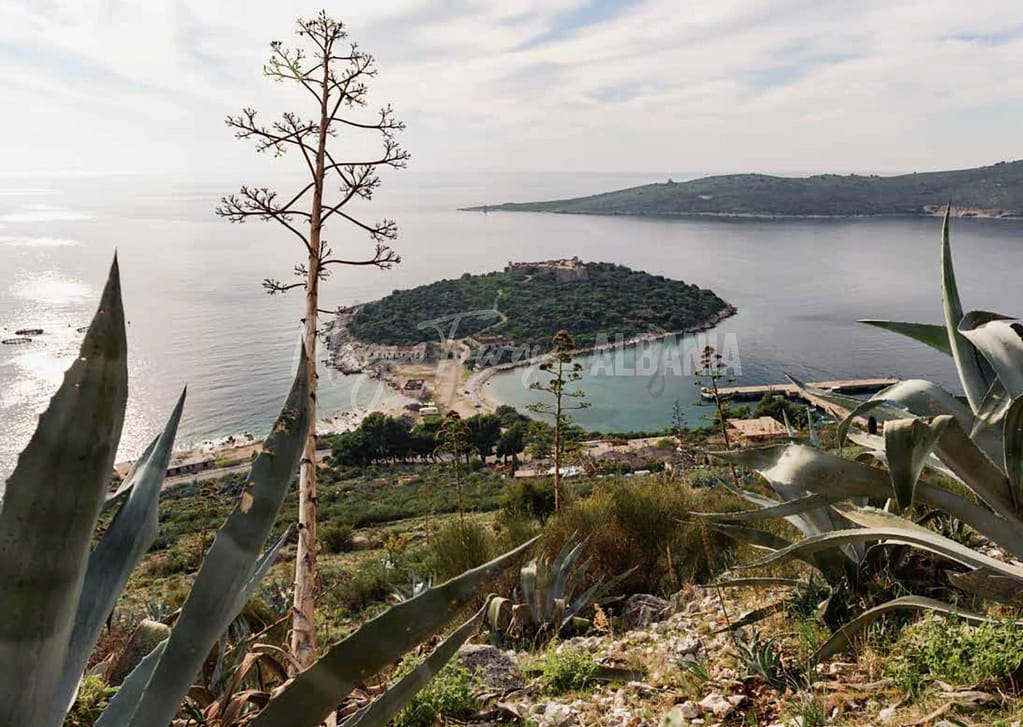
Porto Palermo is a very special spot in Albania, where you can feel like you’ve stepped back into ancient times without much change. It has been home to different groups of people, sometimes with big, impressive civilizations, for thousands of years.
Must Visits in Porto Palermo
The Historic Porto Palermo Fortress: At the tip of a small peninsula in Porto Palermo, you’ll find a historic fortress from the 1800s. This fort was built by Ali Pasha of Tepelenë, a well-known but complex Albanian figure who fought against outside control. His reputation is a mix of being tough, clever, and a bit controversial, even in Albania.
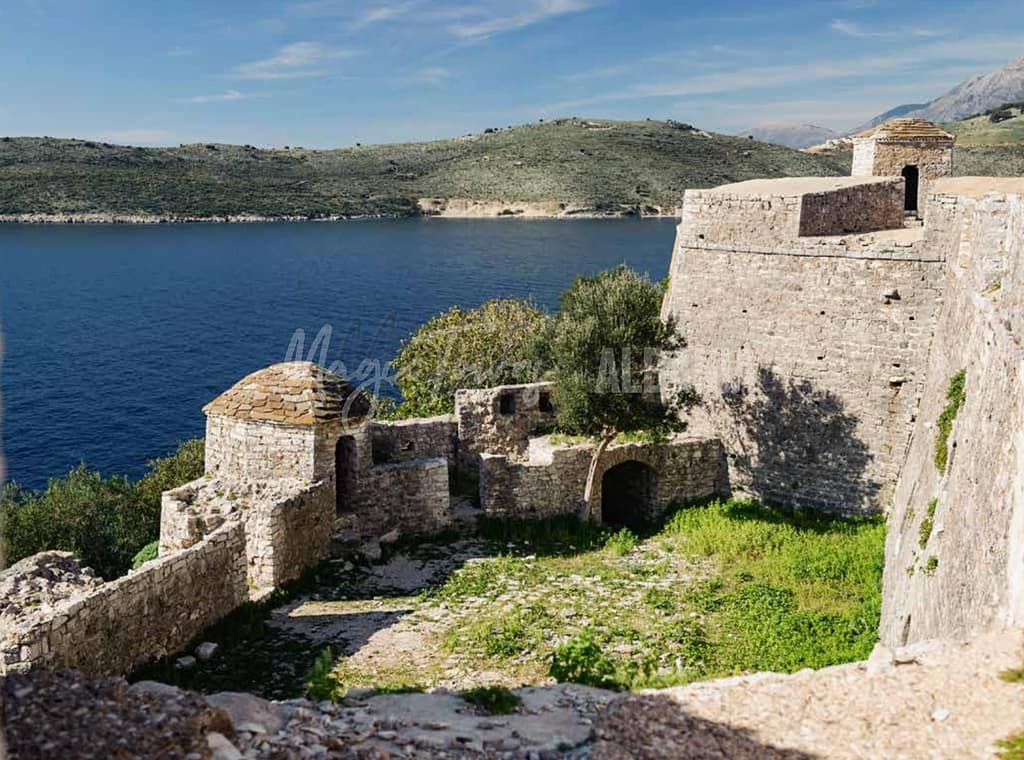
Ali Pasha had the Porto Palermo Castle constructed for his soldiers to use. In the 19th century, a couple of foreign visitors came to Albania and wrote about this castle. Among them were the French consul Pouqueville and British Colonel William Martin Leake. Pouqueville, in particular, is known for giving us one of the most detailed accounts of the castle and the area around Porto Palermo Bay.
Vuno
Vuno, located at the top end of Himarë Province, stand out from other southern villages. Positioned midway up the hills and sliced by the main road, they are characterized by their unique layout against sharp inclines.
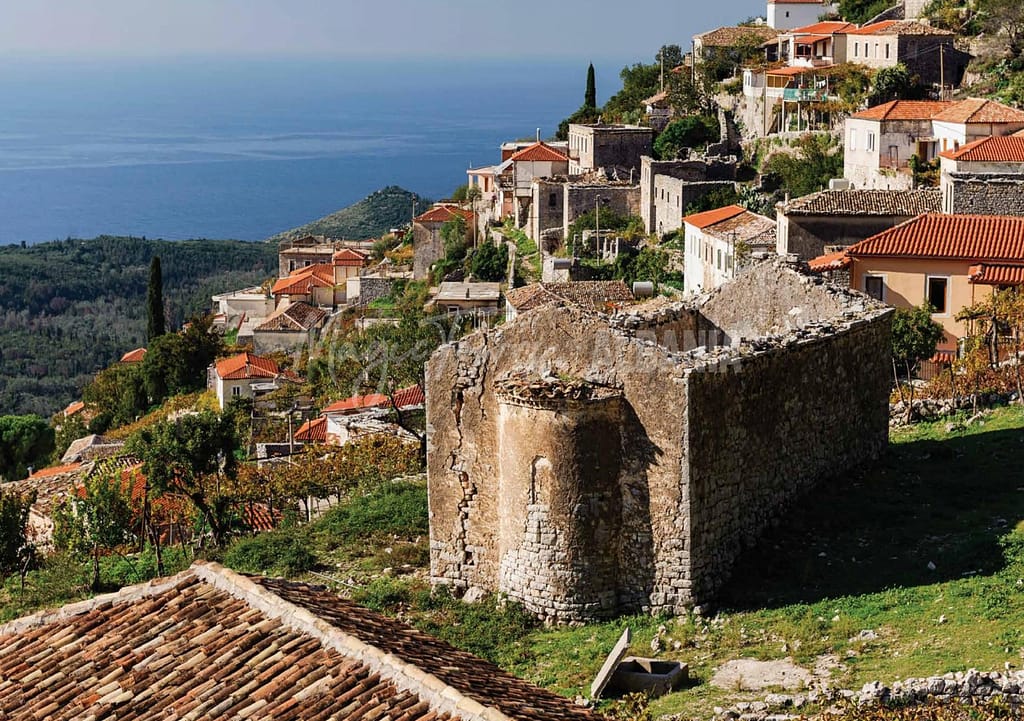
Everywhere you look offers a glorious scene, much like a natural amphitheatre. The village’s narrow, climbing roads are reminiscent of classic Greek or Italian coastal settlements. Vuno also boasts fine 18th-century regional architecture, seen in its homes and churches, and has been the residence of many renowned scholars.
Must Visit in Vuno
Saint Spiridon Church Overview The Saint Spiridon Church, established in 1778, is known for its unique structure featuring three naves divided by stone pillar arcades, with the central nave dominating space.
Saint Mary’s Church, Mesodhi The humble Saint Mary’s Church in Vuno’s southeast quarter presents a single nave with a wooden gabled roof. Built with stone and lime mortar in 1783, the church’s walls embody the simplicity and dedication of its era.
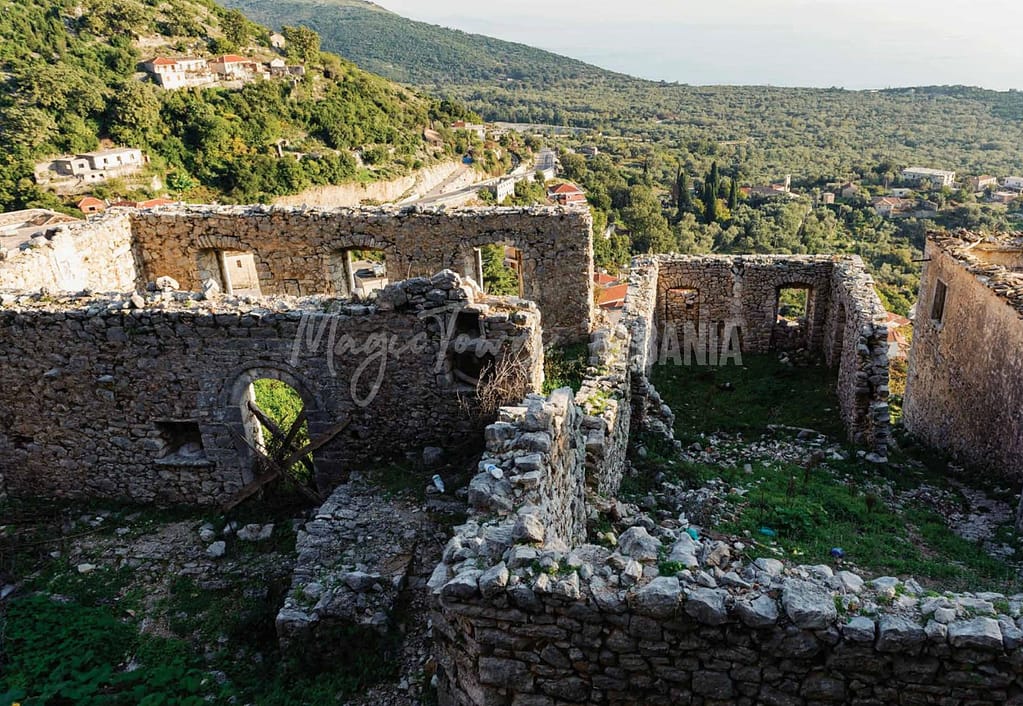
Saint Michael Church In Vuno’s bottom quarter, the Saint Michael Church displays a solitary naos and a distinct iconostasis. Dating back to 1783, its entrance and lone window face north.
Lukove
Lukovë is a village like Piqeras and Vuno, and it’s set on a hill that slopes down towards the sea. It’s right off the main road but doesn’t have its own beach. Even so, you can tell the beach is close by because you can see beach-related items like colourful cloth.
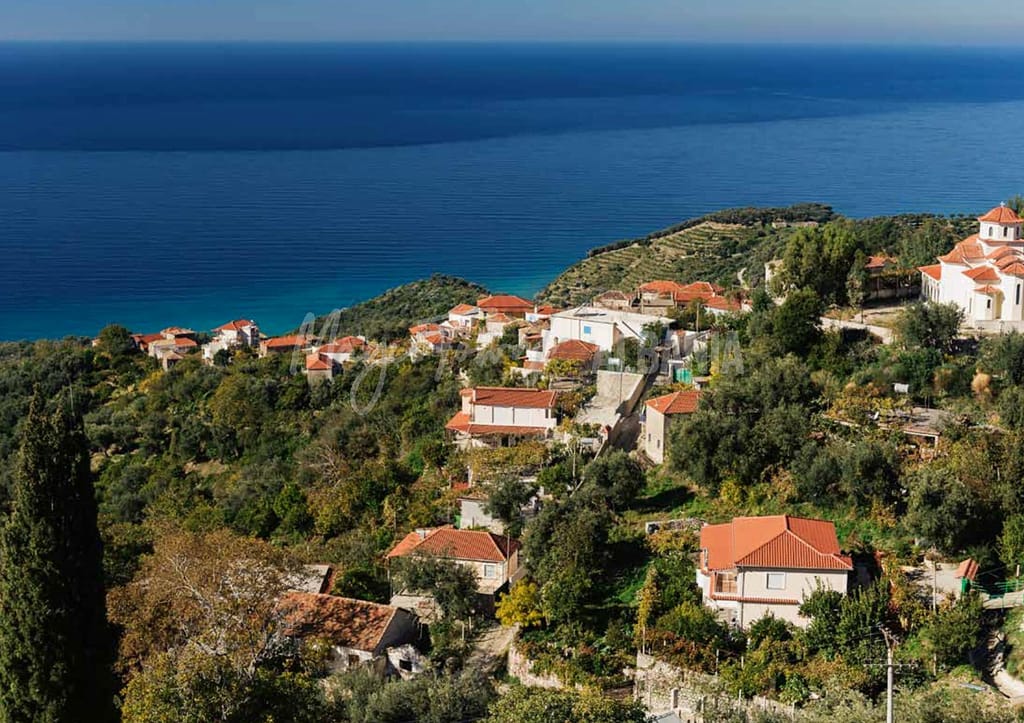
A short walk from the main road, down a curving hill path, takes you to a different part of Lukovë that looks older and more charming. Behind many houses, there are gardens with fruit trees and grapevines, and the green from these gardens stretches up to the path, peeking out from behind the stone walls that line the way.
Must Visits in Lukove
St. Niphon’s New Church A long time ago, a man named St. Niphon, who is important in the Orthodox Christian religion, was born in Lukovë, around the 1200s.
Krorëz Church and Monastery Back in the 1700s, some official papers from the Kingdom of Naples talk about a fight where thirty people from Lukovë died. To say thank you, the King of Naples sent a big bell to the dead people’s hometown, and they put it up in the Krorëz Monastery.
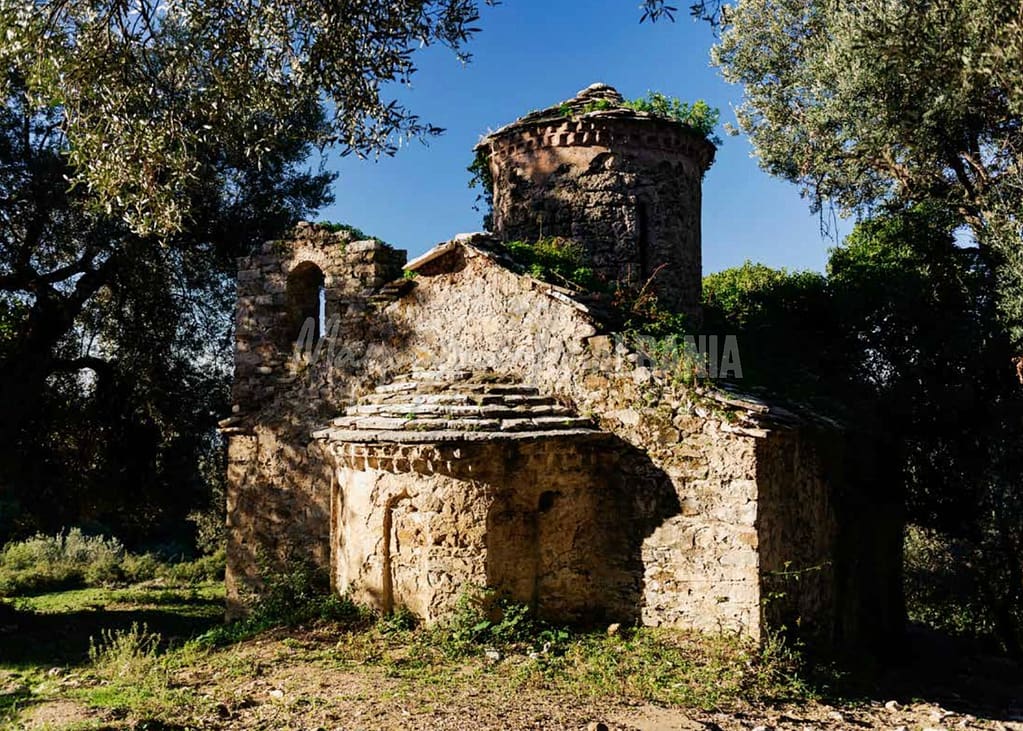
The Sea & Lukova’s Beaches for Holidays Even though Lukova village doesn’t have its own beach right next to it, it’s not too far away. When you drive on the main road through Lukova, you’ll see signs pointing to the sea. Lukovë has some beaches that holidaymakers really like. There’s the “Beach of Caves” and “Bunec Beach,” which are both great places to visit.
Ilias
Ilias is up on a hill that’s not too big, stuck between the sea on one side and some mountains on the other. Ilias is the tiniest place around Himarë, with the fewest people and the smallest bit of land. On one side of Ilias, there’s a sharp drop and a little stream that make a line. This line twists and turns before it goes straight and wide, all the way from the mountains down to the sea. Right where the stream meets the sea, there’s a beach that looks like a slice of pie and it’s called Gjipe.

This place used to be for the military, but now people who love being outdoors go there a lot. They go for short walks, climb rocks, sleep under the stars, and swim. Gjipe is usually a busy spot, but if you go up to Ilias, it’s peaceful.
Must Visit in Ilias
Gjipe Beach: On the side of Ilias that looks out over the ocean, the land gently slopes down to a small, beautiful spot called Gjipe Beach. This beach is snuggled between tall cliffs and has a backdrop of bushy, rolling hills. The red earth has worn away into a pattern of small ridges and valleys around Gjipe, all heading to where the land meets the sea. There’s a path covered by bushes that leads to an opening with space to park cars near a monastery. From there, you can walk a trail for about 30 to 40 minutes to get to Gjipe Beach.
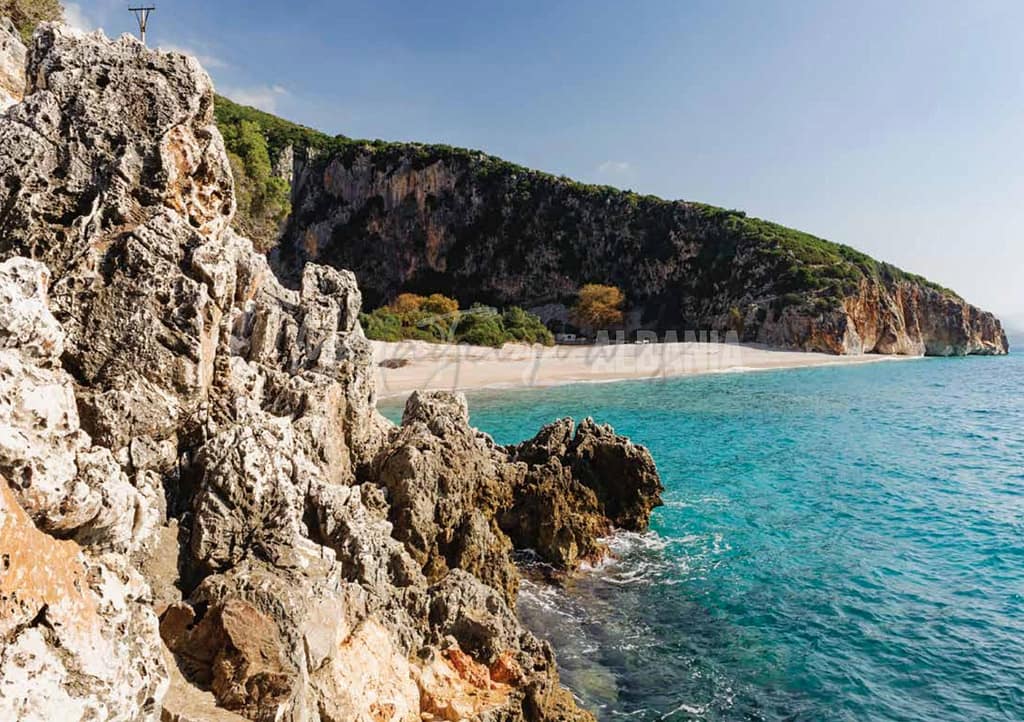
The Gjipe Canyon: Gjipe Canyon is a natural wonder formed by a stream and the wearing away of limestone rocks. It stretches 800 meters long, around 10 to 12 meters across, and the walls can rise up to 100 meters tall. There are caves along the sides of the canyon, most of which haven’t been fully checked out.
Near Ilias, there’s a bridge called the “Gjipe Bridge” or the “Bridge over the River Vuno.” It’s on the way to the monastery close to the Gjipe Canyon. This bridge is special because it’s been picked as an important cultural site by the people who look after old places in the country.
Pilur
Pilur is a village that you can see from the main road in Himare, sitting high up at 700 meters. It looks like a small cluster of trees on a big, light-brown cliff. To get there, you start 10km down the road to the south, then follow a curvy road that goes up the steep side of a mountain. As you drive, you’ll see some of the most amazing and dizzying views of the coast.
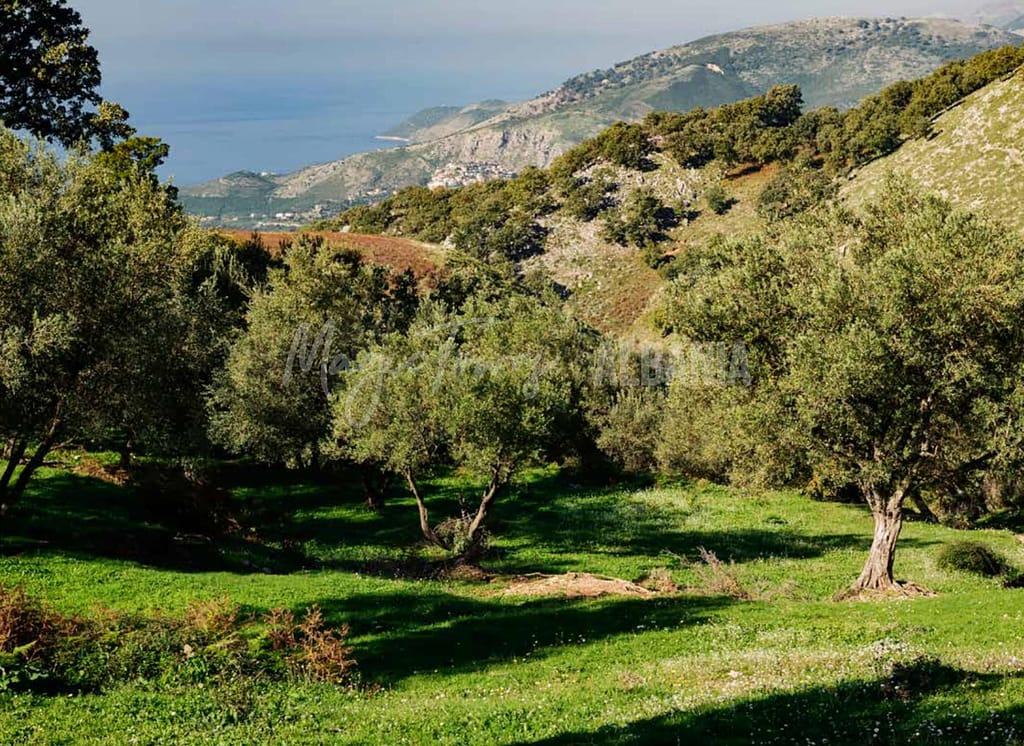
This village is on the edge of a big, flat plateau that is part of a chain of mountains stretching away from the sea. This flat area makes Pilur different because it’s the biggest flat space you can find in this coastal region. On a busy summer day, the village is full of life.
Must Visit in Pilur
St. Nicholas and Iconic Tree: In the middle of the village, a big oak tree stands out, with a church named after St. Nicholas hidden inside its branches. The tree and church make the place look even more special.
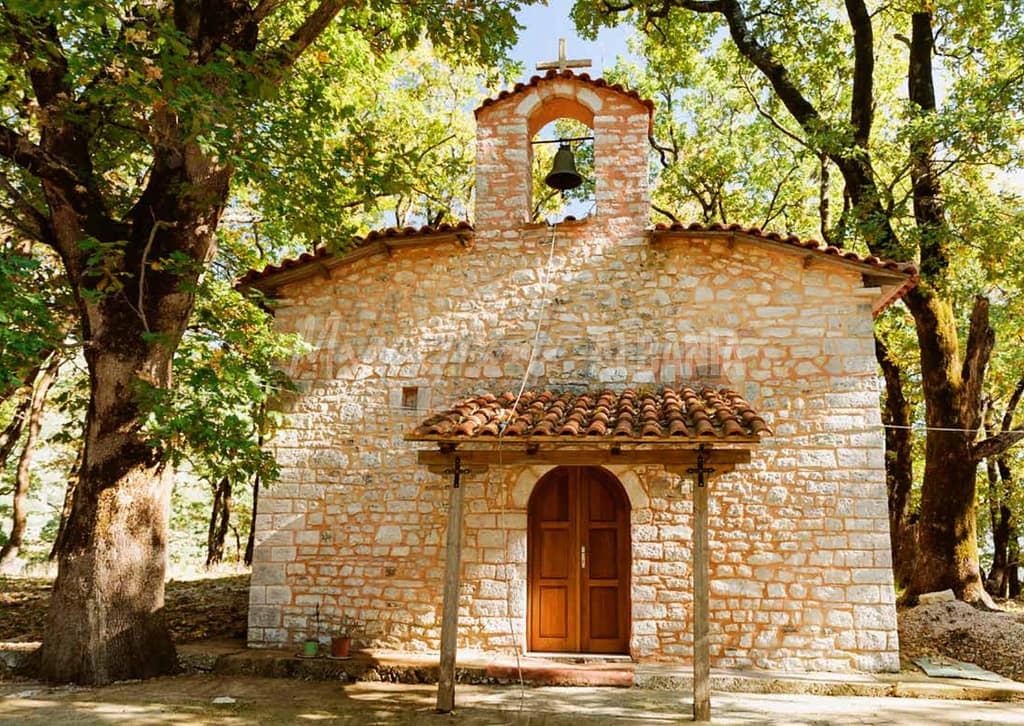
War Memorials: In Pilur, there are at least two war memorials. One is at the car park and the other near the old school, on the west side of town. You can also spot lots of bunkers around, a reminder of Albania’s past under a strict government that lasted 45 years. The country has around 700,000 bunkers, built to protect people.
You Might Also Like:
- 9 Winter Destination in Albania
- Driving Safety in Albania
- Solo Traveling to Albania: A Complete 2024 Guide
- Tipping Culture in Albania: What You Need to Know
- Top 7 Villages to Visit in Albania (2024)
-

Denisa Lamaj is a dedicated writer and expert in finance and real estate based in Tirana, Albania. With a deep understanding of the complexities of relocating and settling in a new country, Denisa crafts informative blogs aimed at assisting individuals moving to Albania. She has previously worked at publer.io and expatax.




